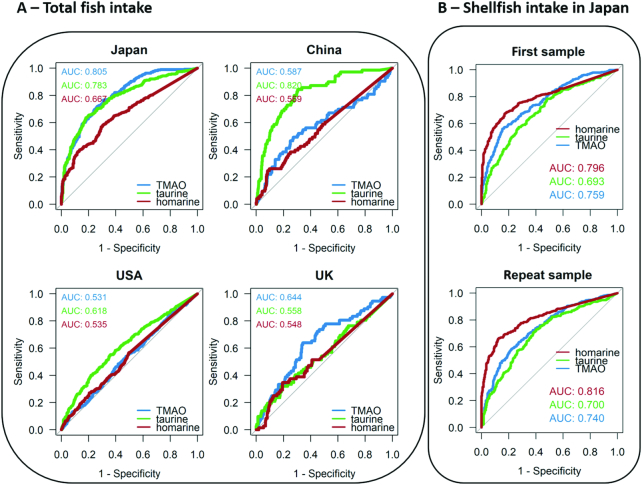FIGURE 2.
Receiver operating characteristic (ROC) curves were used to assess the predictive ability of urinary metabolites of interest in discriminating total fish intake (including shellfish) and separately for shellfish only. A) Panels illustrate by country the ability of urinary metabolites of interest in discriminating high fish intake from nonfish consumers (China, USA, UK) and low fish intake from nonfish consumers (Japan) using samples from the first visit. N = 753 (Japan), N = 757 (China), N = 1777 (USA), N = 409 (UK). Japan: consumers of high fish intake N = 380, consumers of low fish intake N = 373; China: consumers of high fish intake N = 73, nonconsumers N = 684; USA: consumers of high fish intake N = 384, nonconsumers N = 1393; UK: consumers of high fish intake N = 72, nonconsumers N = 337. B) Panel illustrates the ability of urinary metabolites of interest in discriminating high shellfish intake from nonconsumers of shellfish (Japan only). Analysis was independently performed for first and repeat visit urine samples. TMAO, trimethylamine-N-oxide.

